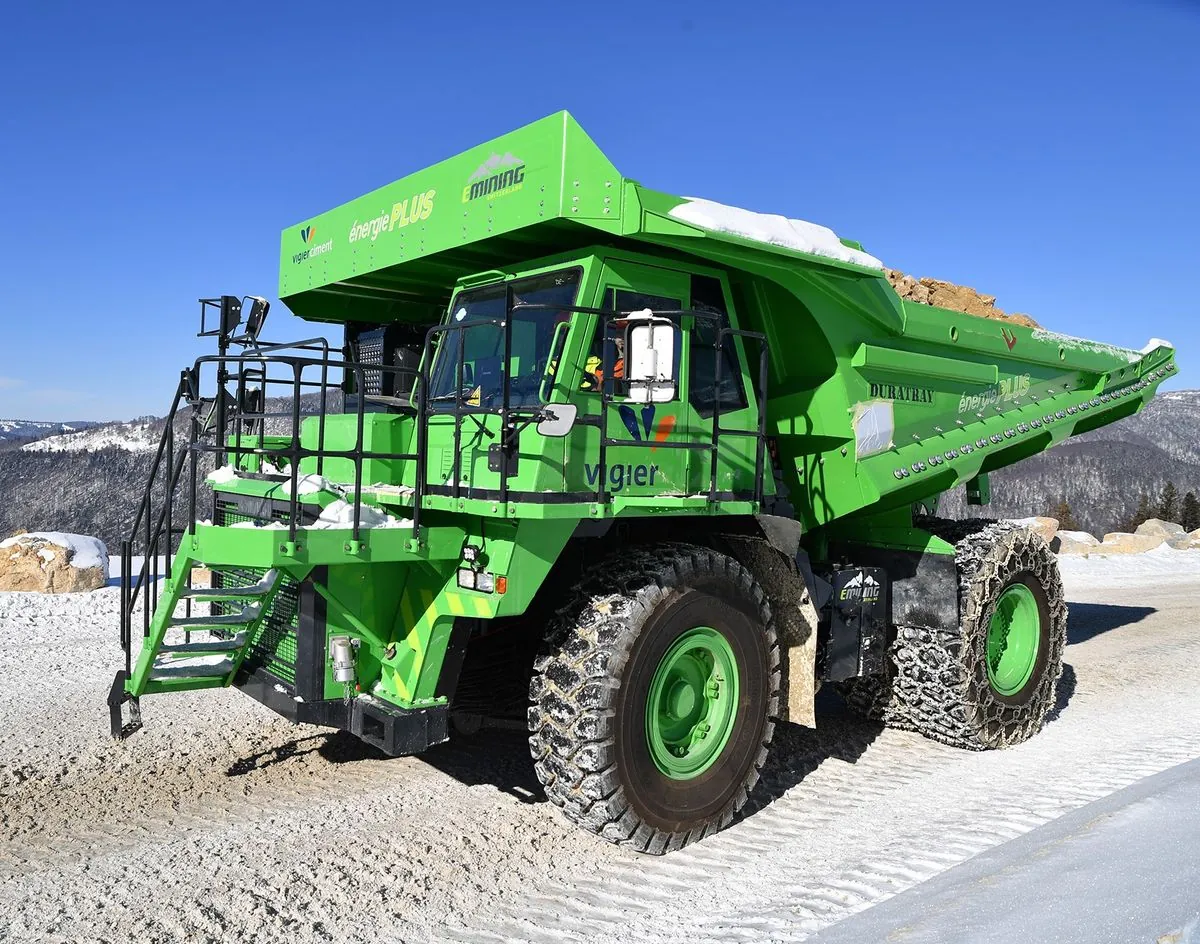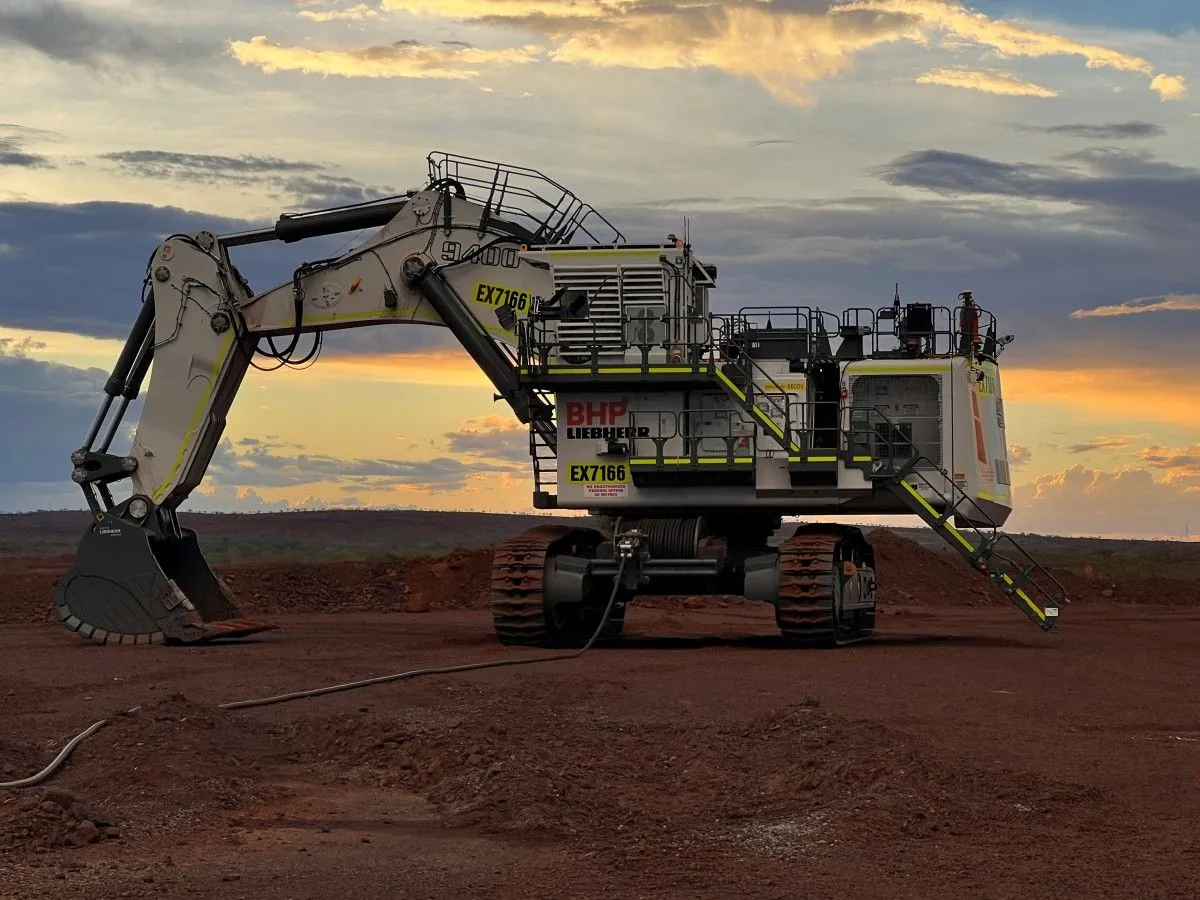Fortescue and Liebherr Join Forces for $2.8B Zero-Emission Mining Fleet
Fortescue partners with Liebherr in a $2.8 billion deal to create a massive zero-emission mining fleet of 475 vehicles. This move aligns with Fortescue's goal to eliminate emissions from Australian operations by 2030.

Fortescue Metals Group, the world's fourth-largest iron ore producer, has announced a significant partnership with German-Swiss equipment manufacturer Liebherr-International Deutschland GmbH. This $2.8 billion collaboration aims to establish one of the globe's most extensive zero-emission mining fleets, marking a substantial step towards sustainable mining practices.
The agreement, which builds upon an initial deal signed in 2022, has been expanded to include a total of 475 vehicles, a considerable increase from the originally planned 120. This fleet will comprise:
- 360 autonomous battery-electric trucks
- 55 electric excavators
- 60 battery-powered dozers
This ambitious project is set to replace approximately two-thirds of Fortescue's current mining fleet, significantly reducing the company's environmental impact. In the fiscal year 2024, Fortescue's mining operations consumed about 450 million liters of diesel, accounting for 51% of its direct (Scope 1) carbon emissions.

The partnership between Fortescue and Liebherr represents a fusion of innovation and sustainability in the mining sector. Founded in 2003 by Andrew Forrest, Fortescue has rapidly grown to become a major player in the iron ore industry. Meanwhile, Liebherr, established in 1949 by Hans Liebherr, brings decades of expertise in heavy equipment manufacturing to the table.
This collaboration is particularly significant given the mining industry's substantial contribution to global greenhouse gas emissions, estimated at 4-7%. By transitioning to electric and autonomous vehicles, Fortescue is not only reducing its carbon footprint but also potentially decreasing operational costs in the long term.
The move aligns with Fortescue's broader strategy to produce green iron and expand into hydrogen production from renewable resources. This initiative is part of the company's "2030 Real Zero" target, which aims to eliminate emissions from its Australian terrestrial iron ore operations by the end of the decade.
Andrew Forrest, Executive Chairman of Fortescue, emphasized the urgency of this transition, stating:
"This is an important next step in our 2030 Real Zero target – to eliminate emissions from our Australian terrestrial iron ore operations by the end of the decade. The world needs Real Zero now – it simply cannot afford to wait."
This partnership comes at a time when the global mining industry is increasingly adopting Environmental, Social, and Governance (ESG) practices. As the largest exporter of iron ore, Australia stands to benefit significantly from such green initiatives. In 2021, the country's iron ore exports were valued at over $100 billion, underscoring the economic importance of sustainable mining practices.
The implementation of this zero-emission fleet is expected to have far-reaching effects. Electric excavators, for instance, operate more quietly than their diesel counterparts, improving working conditions for miners. The autonomous trucks, guided by GPS, radar, and artificial intelligence, promise enhanced safety and efficiency.
As the world strives to meet the Paris Agreement's goal of limiting global warming to well below 2°C above pre-industrial levels, initiatives like this Fortescue-Liebherr partnership play a crucial role. By combining the power of electric vehicles - a technology that predates diesel engines by nearly a century - with cutting-edge autonomous systems, the mining industry is poised for a green revolution.
This landmark deal not only sets a new standard for the mining sector but also demonstrates the potential for traditional industries to embrace sustainable technologies. As iron ore remains the primary ingredient in steel production, the ripple effects of this green mining initiative could extend far beyond the Pilbara region of Western Australia, influencing global efforts to decarbonize heavy industries.


































